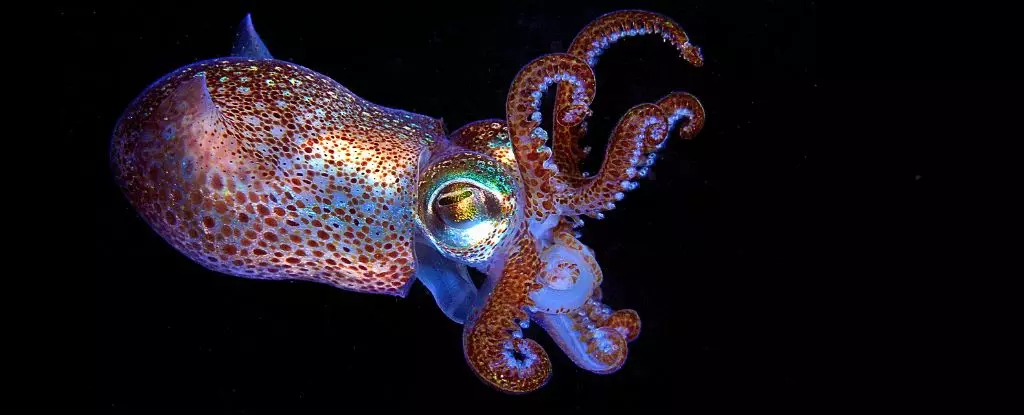In the depths of the ocean, where light struggles to pierce the surface, lies a fascinating capability of cephalopods—squid, octopuses, and cuttlefish—that has piqued the interest of scientists for years. These magnificent creatures possess an unparalleled ability to alter their skin color, enabling them to blend into their environment or convey messages to one another through vivid displays of color. This extraordinary adaptation represents not just a survival mechanism in a world of predators but also hints at a deeper interplay between biology and energy conversion that deserves our full attention. Recent research, catalyzed by biochemist Taehwan Kim and his team at Northeastern University, has ignited exciting possibilities around the photosensitive qualities of squid pigments and their potential applications beyond the aquatic realm.
Harnessing Nature’s Technology
Combining the biology of the longfin inshore squid (Doryteuthis pealeii) with innovative technology, researchers have demonstrated that the pigments found within the squid’s chromatophores can produce electricity when exposed to light. This finding raises profound questions: If these pigments can harvest solar energy, which natural evolutionary processes led to such unexpected efficiency? The charm of this research does not just lie in its scientific novelty; it represents a mesmerizing convergence of nature and technology that could steer future energy solutions. According to Leila Deravi, one of the team members, the more chromatic granules placed in their photovoltaic setup, the greater the electrical output. This suggests an intricate network of electrical communication that allows these pigments to not only sense external light but also translate it into usable energy, a feat rendered even more remarkable when one considers the natural, aquatic setting.
The Speed of Light Transformation
The implications behind this efficient energy conversion are nothing short of awe-inspiring. Imagine an organism capable of assessing the light conditions in its environment and responding almost instantaneously in a matter of milliseconds. This biological clockwork must not only prompt immediate camouflage from predators but could potentially lead to revolutionary advancements in smart textiles and wearable electronics. As Deravi eloquently states, “It’s not something that’s easy to do, especially in a living system that’s underwater.” If we can unlock the secrets behind this rapid response system, we could pave the way for technology that mimics these biological processes. The future of energy generation may well lie in the lessons we learn from these intelligent creatures.
Redox Reactions: Nature’s Hidden Engineer
At the heart of this groundbreaking discovery are the chromatophores, which house pigments of red, yellow, and brown, each contributing to the dazzling spectrum of color displayed by cephalopods. The process by which these pigments react to light—through what is known as a redox reaction—illustrates a natural form of electrical signaling that could revolutionize how we understand energy conversion in biological systems. When exposed to light, these pigments release electrons, creating an electrical charge that could potentially synchronize adjacent chromatophores. In a world racing toward sustainable solutions, this kind of biological efficiency presents a call to arms for scientists and engineers alike. By mimicking these natural systems, we could enhance our current technologies, making them more responsive and efficient.
Beyond the Ocean: Practical Applications
The synaptic dance of squid pigments opens up myriad possibilities beyond mere academic curiosity. Picture a future where clothing can adapt to varying light levels or where buildings utilize bio-inspired materials to self-regulate temperatures based on sunlight exposure. The very characteristics that allow squids to adapt to their surroundings could inform new designs in architecture and environmental technology, reducing energy consumption and paving the way for the cities of tomorrow. As we inch closer toward a future rife with energy challenges, understanding and harnessing the marvels of nature becomes more critical than ever.
As we uncover the myriad revelations happening beneath the waves, perhaps the most significant takeaway is not just the specific functionalities of chromatic pigments but what they represent in the grand scheme of innovation and sustainability. We must ask ourselves: how can we be inspired by these wonders of evolution to create technologies that truly harmonize with our environment? The potential for growth seems boundless if we are willing to learn from the intricate designs that nature has perfected over millennia.

Leave a Reply